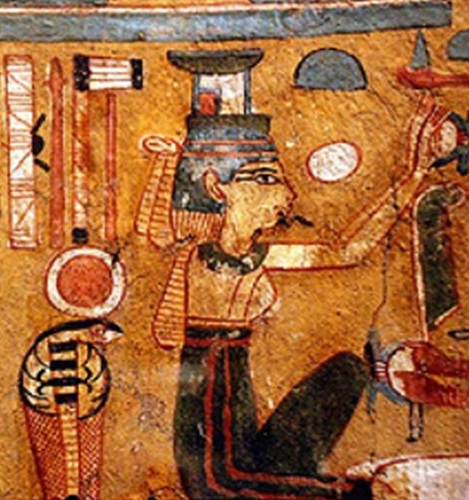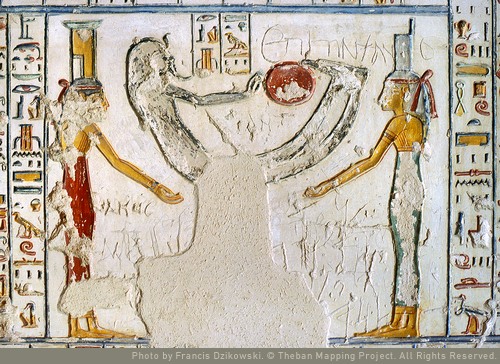We have already seen that Artemidora selected images of Isis, Nephthys, the two mourners, and Osiris at their feet and at both sides od her corpse. In both cases, the decoration was very concise and minimalist, but highly effective.

Coffin of Artemidora from Meir (AD 90-100). Isis and Nephthys are a constant in the iconography. Photo: metmuseum.org
The funerary mask of Artemidora was the most decorated element of the whole set. In contrast to the body art the head appears as the selected support for a more complete composition. We can even distinguish an upper and lower register with their corresponding scenes.
Upper register.
he first thing that attracts attention is the background color: black.
Over this background at each end (left and right) appear a mourning woman. Both present interesting features:
- Unidentified (no name and no symbol)
- Kneeling.
- Half mane (or short hair) and a tape around the forehead.
- Half naked. They are just wearing a simple skirt.

Funerary Mask of Artemidora. Right side with one of the mourners. Photo: metmuseum.org











